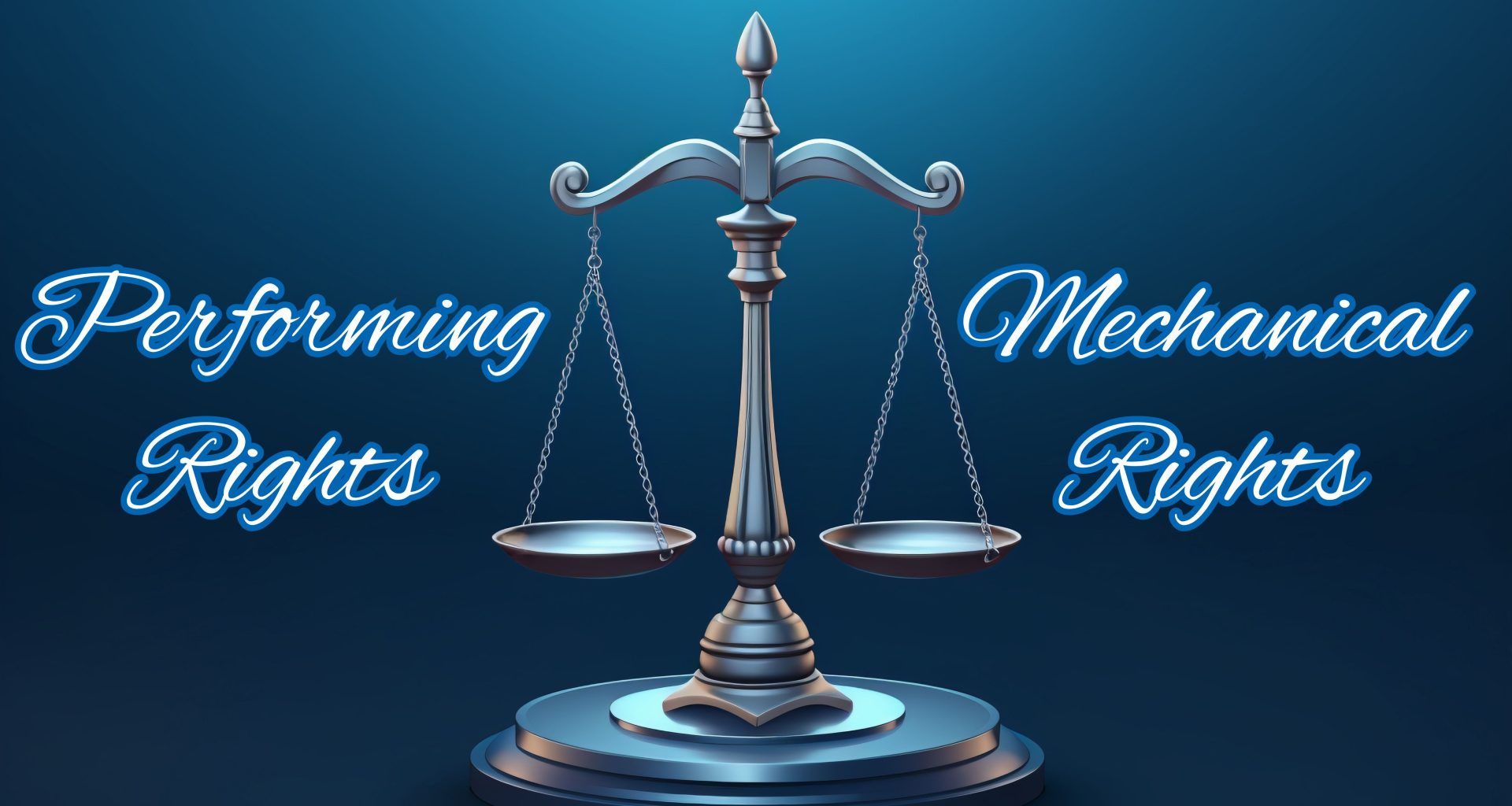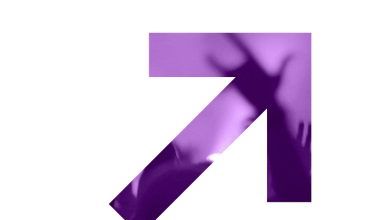In the music industry, two crucial concepts often confuse artists, composers, and even music enthusiasts: Performing Rights vs. Mechanical Rights. These rights are essential for protecting the intellectual property of music creators and ensuring they receive fair compensation for their work. This blog will dive deep into the definitions, differences, and significance of performing and mechanical rights. By understanding these concepts, artists can better navigate the complexities of the music industry and ensure they are properly compensated for their creations.
What are Performing Rights?
Performing rights refer to the right to publicly perform a piece of music. This includes live performances, radio broadcasts, streaming, and even playing a song in a public place like a restaurant or store. When a song is played publicly, the creator of the music has the right to be compensated. Organizations known as Performance Rights Organizations (PROs) manage these rights and collect royalties on behalf of artists and composers. In India, the Indian Performing Right Society (IPRS) is one such organization.
Types of Performing Rights
- Public Performance Rights: This includes live performances and broadcasts on radio and television. Public performance rights are crucial for artists who frequently perform their music or have their songs played on public platforms. Whether it’s a small gig at a local cafe or a large-scale concert, these performances generate income for the artist through the collection of royalties.
- Digital Performance Rights: These are relevant in the digital age, covering streaming services and online radio. With the rise of digital platforms, the significance of digital performance rights has grown exponentially. Streaming platforms like Spotify, Apple Music, and Amazon Music fall under this category. Artists receive royalties based on the number of streams their songs receive. This form of revenue has become a major source of income for many musicians, especially as physical sales decline.
What are Mechanical Rights?
Mechanical rights, on the other hand, pertain to the reproduction of a piece of music. This means producing copies of a song, whether on physical media like CDs and vinyl or digital formats. Whenever a song is reproduced, the holder of the mechanical rights is entitled to royalties. In India, these rights are managed by organizations like the Indian Music Industry (IMI) and Phonographic Performance Limited (PPL).
Types of Mechanical Rights
- Physical Mechanical Rights: These include the reproduction of music on physical media, such as CDs, vinyl records, and cassettes. Even in the digital age, there remains a niche market for physical media. Collectors and audiophiles often prefer physical formats, making physical mechanical rights still relevant for many artists.
- Digital Mechanical Rights: These cover the reproduction of music in digital formats, including downloads and streaming. Digital mechanical rights are critical in today’s music industry, as digital downloads and streaming have become the primary means of music consumption. Platforms like iTunes and Google Play, where users can purchase digital downloads, pay mechanical royalties to the songwriters and publishers.
Key Differences Between Performing Rights and Mechanical Rights
While both performing and mechanical rights are vital for compensating music creators, they serve different purposes and involve different types of royalties. Let’s explore the key differences:
- Scope: Performing rights involve the public performance of a song, while mechanical rights relate to the reproduction of a song. The scope of these rights highlights their distinct roles in the music industry. Performing rights focus on the act of playing music publicly, whether live or recorded, while mechanical rights deal with the creation of copies of the music.
- Collection Agencies: PROs collect performing rights royalties, whereas mechanical rights royalties are collected by organizations like IMI and PPL. These agencies ensure that royalties are accurately tracked and distributed, providing a critical service to artists who may not have the resources to monitor all the uses of their music.
- Royalties: Performing rights royalties are paid whenever a song is performed publicly, while mechanical rights royalties are paid whenever a song is reproduced. This difference in payment structure means that an artist can potentially earn from both types of rights from the same song, increasing their total revenue.
How Are Performing Rights and Mechanical Rights Managed?
Performing Rights Management
To manage performing rights, artists typically register with a PRO. These organizations monitor public performances and broadcasts of registered music, collecting royalties and distributing them to the rightful owners. This process ensures that artists are compensated whenever their music is played publicly. In addition to registration, PROs offer other services such as tracking and reporting, which are crucial for artists to understand how and where their music is being used.
Performing rights management also involves negotiations and licensing agreements. For example, when a venue or broadcaster wants to use a piece of music, they must obtain a license from a PRO. This license grants them the legal right to use the music in exchange for a fee, which is then distributed to the artists. This system not only compensates artists but also ensures that music is used legally and ethically.
Mechanical Rights Management
Mechanical rights management involves licensing the reproduction of music. This can be done through direct agreements with record labels or digital distributors. In India, organizations like IMI and PPL handle these rights, ensuring that artists receive royalties for every reproduction of their music. These organizations negotiate with manufacturers, digital platforms, and other entities to secure royalties for the reproduction of music.
In the digital age, managing mechanical rights has become more complex due to the various formats and platforms available. For instance, a single song can generate mechanical royalties from multiple sources, including streaming, downloads, and physical sales. This requires meticulous tracking and reporting to ensure that artists are paid accurately. Additionally, with the global nature of digital music distribution, artists must often work with multiple agencies and organizations to collect royalties from different countries.
Importance of Understanding Performing Rights and Mechanical Rights
For artists and composers, understanding the difference between performing rights and mechanical rights is crucial. It not only helps them protect their intellectual property but also ensures they receive appropriate compensation. Here are a few reasons why these rights are important:
- Revenue Generation: Both rights are significant sources of income for artists. Proper management of these rights can lead to consistent revenue streams. For many artists, especially those not tied to major labels, these royalties can be a primary source of income. This makes understanding and managing these rights essential for financial stability.
- Legal Protection: Understanding these rights helps artists protect their work from unauthorized use and reproduction. Infringements on these rights can lead to significant financial losses and legal battles. By being informed, artists can take the necessary steps to safeguard their work and ensure they are fairly compensated.
- Career Growth: By effectively managing these rights, artists can focus on creating music while ensuring their creations are financially secure. As artists grow in popularity, the management of these rights becomes increasingly complex. Proper understanding and management can lead to more opportunities, such as licensing deals, collaborations, and international tours.
Case Studies: Real-World Examples
Case Study 1: The Beatles and Mechanical Rights
The Beatles, one of the most iconic bands in history, faced issues with mechanical rights. Initially, they signed away their mechanical rights to a record label, which meant they didn’t earn royalties from the reproduction of their music. This situation highlights the importance of understanding and negotiating mechanical rights for financial stability. As a result, the band members learned the hard way the value of retaining control over their intellectual property.
The Beatles’ experience also underscores the importance of understanding the long-term implications of contracts. Many artists, especially when starting, may not fully grasp the significance of mechanical rights. By learning from the mistakes of others, artists can make informed decisions and protect their financial interests.
Case Study 2: Taylor Swift and Performing Rights
Taylor Swift’s dispute with Spotify in 2014 emphasized the value of performing rights. Swift pulled her catalog from the streaming platform, arguing that artists were not compensated fairly for their work. This move brought attention to the importance of fair compensation for public performances and digital streaming. Swift’s actions sparked a broader conversation about the economics of streaming and the value of music.
Swift’s case also illustrates the power that artists have in the digital age. By controlling her music’s distribution, she was able to negotiate better terms for herself and other artists. This case is a reminder that understanding performing rights and being willing to take a stand can lead to positive changes in the industry.
How to Protect Your Performing and Mechanical Rights
- Register with PROs: Ensure your music is registered with a reputable PRO to collect performing rights royalties. Registration not only ensures that you receive royalties but also provides a level of legal protection. It establishes a formal record of your work, which can be crucial in cases of disputes.
- Understand Licensing Agreements: Before signing any agreements, understand the terms related to mechanical rights and ensure they are favorable. Licensing agreements can be complex, and the terms can significantly impact your earnings. It’s advisable to consult with a legal professional to fully understand the implications of any contract you sign.
- Seek Legal Advice: Consult with a legal professional to navigate the complexities of music rights and protect your intellectual property. An experienced attorney can help you negotiate contracts, protect your rights, and advise you on best practices for managing your music career. They can also assist in enforcing your rights in cases of infringement.
- Use Technology for Rights Management: There are various software and platforms available that can help artists manage their rights more effectively. These tools can track performances, reproductions, and calculate royalties. By leveraging technology, artists can streamline the management of their rights and focus more on their creative pursuits.
- Educate Yourself: The music industry is continually evolving, with new platforms, technologies, and legal frameworks emerging. Staying informed about these changes is crucial for protecting your rights. Attend workshops, read industry publications, and join organizations that offer resources and support for artists.
Common Misconceptions About Performing and Mechanical Rights
Misconception 1: They Are the Same Thing
One common misconception is that performing rights and mechanical rights are the same. However, they are distinct concepts with different implications for artists and composers. Performing rights deal with the public performance of music, while mechanical rights involve the reproduction of music. Understanding this distinction is crucial for artists to manage their rights effectively.
Misconception 2: Only Big Artists Benefit
Another misconception is that only well-known artists benefit from these rights. In reality, all artists, regardless of their fame, are entitled to royalties from performing and mechanical rights. While well-known artists may earn more due to their popularity, emerging artists can still generate significant income, especially if they have a dedicated fanbase. By properly managing these rights, even indie artists can build a sustainable career.
Misconception 3: Digital Platforms Don’t Pay Royalties
Some believe that digital platforms, especially streaming services, do not pay adequate royalties. While it’s true that the per-stream revenue can be low, these platforms do pay royalties based on the number of streams. For many artists, streaming platforms have become a vital source of income. It’s essential to understand how these platforms work and how to maximize earnings from them.
Conclusion
Understanding the difference between performing rights and mechanical rights is crucial for anyone involved in the music industry. These rights not only protect artists’ intellectual property but also ensure they are compensated for their work. By managing these rights effectively, artists can secure a stable income and focus on creating music. As the industry continues to evolve, staying informed about these rights will become increasingly important.
For further reading, explore these related articles:
- Deliver My Tune’s Exciting New Services!
- How to Upload Your Song on Apple Music or iTunes?
- Why is There a Need for Digital Aggregators in Music Distribution?
For additional resources on music marketing and distribution, visit Deliver My Tune.






